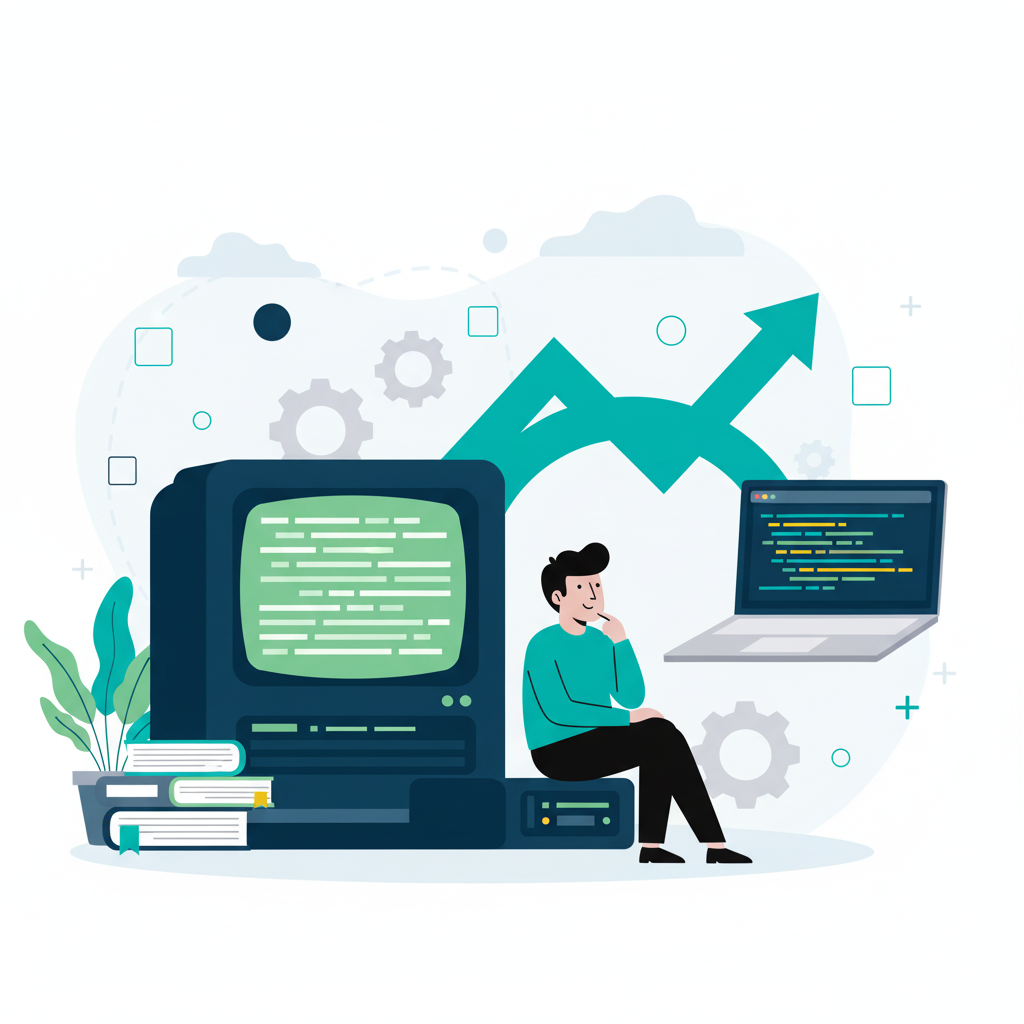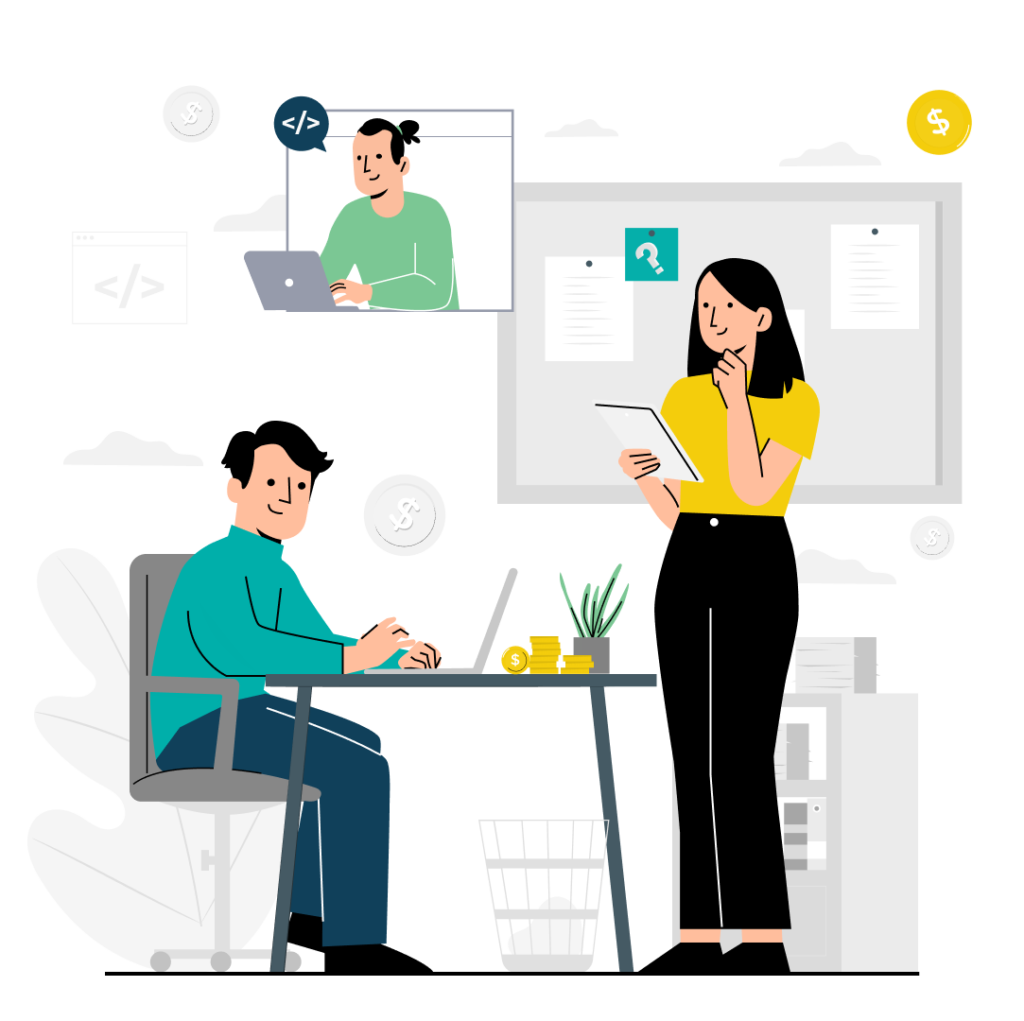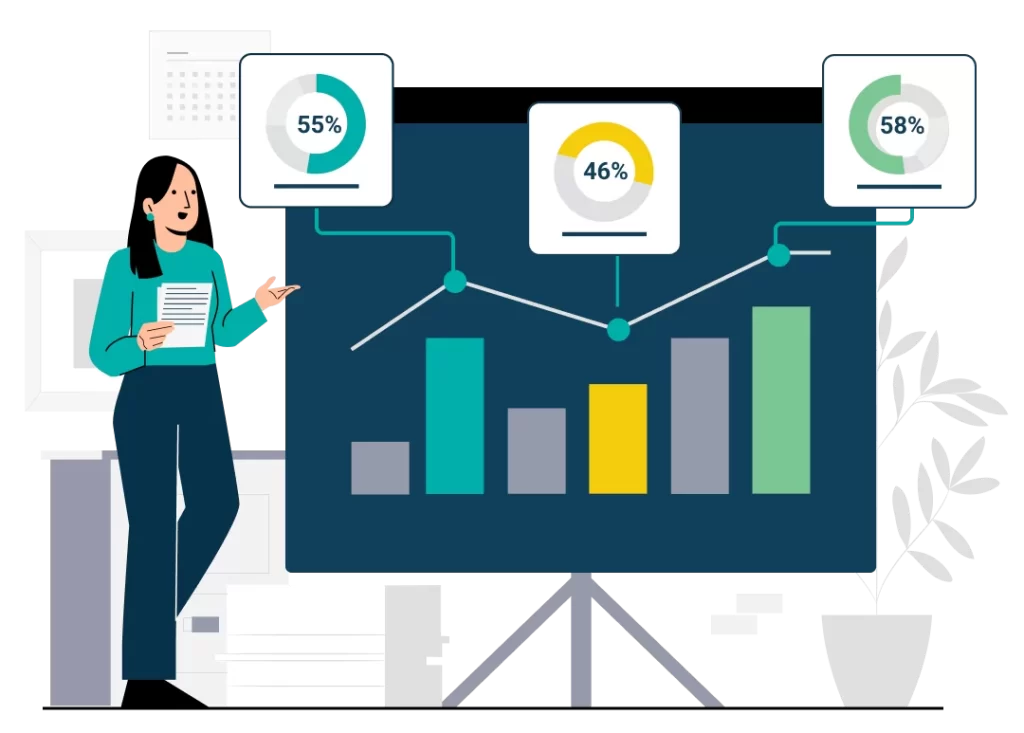Here’s a weird career puzzle for you. Should you spend time learning a 66-year-old programming language? Is it career suicide or a smart move?
This guide is part of our archaeological software series, examining career opportunities in learning from legacy systems.
COBOL powers 70% of global business transactions. Banking, insurance, government – it’s running the show. Universities stopped teaching it decades ago.
Mainframe experts are retiring – the average COBOL programmer is around 60 years old. There’s a skills shortage coming in 5-10 years. Meanwhile modern developers won’t touch it.
Three career paths are opening up: maintenance specialist, modernisation consultant, and hybrid developer. Salaries run from $86K to $150K.
This guide gives you the data on COBOL and mainframe career paths. Salary benchmarks, skills shortage projections, learning roadmaps, and an honest look at trade-offs.
Is it Worth Learning COBOL in 2025?
Yes, but only for three specific scenarios. One – you want high-stability maintenance roles ($86K-$97K). Two – you’re pursuing premium modernisation consulting ($97K-$150K, but you need a dual skillset). Three – you’re building a hybrid developer career ($90K-$130K).
Skip it if you want cutting-edge technology work or startup environments.
The mainframe skills shortage is going to hit critical levels in 5-10 years. That creates sustained demand until at least 2035.
Time investment is 6-12 months to reach job-ready baseline. GnuCOBOL lets you practise on your laptop. IBM’s Coursera courses give you theoretical mainframe knowledge.
The job market is smaller than modern web development. But there’s less competition and higher entry-level salaries. Remote work opportunities are growing – $121K in the US, $47/hour CAD in Ontario, €74K in Germany.
Mainframe jobs will exist through 2035 minimum. Migration cost and risk are prohibitive. Re-engineering 40-year-old systems with 10 million+ lines of code costs tens of millions. The risk is enormous.
The disadvantages? Smaller cutting-edge community. Slower technology evolution. Potential boredom in pure maintenance roles. You won’t find COBOL jobs at startups.
Match the career path to your priorities. Stability versus growth. Specialisation versus breadth.
What Are the Three Different Career Paths in Legacy Systems Work?
Legacy systems careers divide into three distinct paths. There’s Maintenance Specialist – keeping existing systems operational. Modernisation Consultant – bridging legacy to modern infrastructure. And Hybrid Developer – integrating legacy with contemporary applications.
Maintenance Specialist ($86K-$97K) is pure legacy skillset. COBOL, JCL, CICS, IMS, and VSAM. Stable demand. Best for developers who value predictability. Day-to-day work involves debugging production issues, maintaining existing code, ensuring systems keep running.
Modernisation Consultant ($97K-$150K) demands a dual skillset. Legacy expertise AND cloud, APIs, and microservices. This is the highest demand path. That premium salary comes from the rare combination.
Most customers want control of their intellectual property and costs, which creates opportunities for individual consultants. The CTO demand for legacy expertise combined with modernisation creates career opportunities where transition expert demand continues to grow.
Hybrid Developer ($90K-$130K) focuses on integration. Banks are wrapping core COBOL modules with Java interfaces for easier integration. This is the most future-proof path as companies maintain legacy whilst building modern interfaces.
The trade-offs? Maintenance offers quickest entry. Modernisation demands most learning but highest pay. Hybrid provides best long-term flexibility.
Why Do Companies Still Run Mainframes When Cloud is Available?
Companies maintain mainframe systems because they excel at capabilities modern cloud platforms struggle to match. Perfect decimal arithmetic for financial calculations. Proven 99.999% uptime. Ability to handle billions of daily transactions.
Decimal arithmetic precision matters. COBOL provides native decimal handling that prevents rounding errors. When you’re processing millions of transactions where cents matter, floating-point errors aren’t acceptable.
z/OS mainframes achieve 99.999% uptime – that’s 5 minutes of annual downtime. Cloud SLAs promise 99.9% to 99.95% – 8 to 43 hours. For 24/7 transaction processing, that difference matters.
Migration cost explains why they’re staying. Re-engineering 40-year-old systems with 10 million+ lines of code costs tens of millions with high failure risk.
The hybrid architecture trend – companies use mainframes for transaction cores whilst building modern API layers for customer-facing applications.
How Do I Learn COBOL Without Access to a Mainframe?
Use GnuCOBOL – a free open-source COBOL compiler that runs on Windows, Mac, and Linux. Write, compile, and execute programs on your laptop. Combine GnuCOBOL practice with IBM’s Coursera courses.
GnuCOBOL is GPL licensed and supports COBOL-85 and COBOL-2014 standards. The IBM Z Mainframe Professional Certificate costs around $39-49/month.
Build portfolio projects to prove competence. A payroll batch processor. An inventory file handler. A financial calculator. Derek Banas created a comprehensive COBOL video tutorial that’s the single best resource. The Open Mainframe Project provides a free COBOL course on GitHub.
Employers hire junior developers with portfolio evidence even without mainframe access. They provide on-the-job training for z/OS specifics.
Modern COBOL accepts free format which removes the strict column requirements. GitHub Copilot can help explain COBOL code you’re trying to understand.
What’s the Mainframe Skills Shortage and Will Jobs Exist in 10 Years?
The mainframe skills shortage is the widening gap between retiring experts and available replacements. It’s projected to reach critical severity in 5-10 years. Jobs will exist through 2035 minimum because 70% of business transactions run on mainframes.
COBOL programmers are scarce and the average age is around 60. Universities stopped teaching COBOL decades ago whilst transaction volume continues growing.
Several states reported their legacy systems required immediate action during the pandemic but programmers were scarce.
Salary trends demonstrate the shortage. ZipRecruiter average rising to $121K. Modernisation consultants reaching $150K.
Major financial institutions have zero plans for full mainframe retirement by 2035. COBOL still powers mission-critical systems in banking, insurance, and government.
You’re looking at a 10-15 year runway minimum. The systems aren’t going anywhere fast.
What Skills Beyond COBOL Do I Need for Mainframe Work?
Beyond COBOL, you need JCL for batch job scheduling, CICS for online transaction processing, IMS or DB2 for database management, VSAM for file handling, and z/OS fundamentals.
For modernisation roles, add API development, cloud platforms, containerisation, and microservices. Developing archaeological skills for legacy work requires a systematic approach to understanding old code.
Here’s a four-phase learning roadmap. Phase 1 – COBOL basics (2-3 months). Phase 2 – JCL, CICS, IMS, VSAM (2-3 months). Phase 3 – APIs, cloud platforms, containerisation (2-3 months). Phase 4 – Dual skillset integration (1-2 months).
Maintenance specialist needs phases 1-2 only. That’s 6 months. Modernisation consultant requires all four – 12-18 months.
How Much Do COBOL Programmers and Mainframe Specialists Earn?
COBOL programmers earn $86K-$121K annually in the United States. Maintenance specialists: $86K-$97K. Hybrid developers: $90K-$130K. Modernisation consultants: $97K-$150K.
Entry-level roles start $70K-$85K. Mid-career hits $90K-$120K. Senior modernisation consultants reach $130K-$150K.
Geographic variance: US commands highest salaries. Germany €74K. Philippines ₱776K for remote roles.
Entry-level mainframe pays slightly higher than entry web development. Senior mainframe consultant is comparable to senior full-stack developer. The difference – less competition.
Many mainframe roles offer strong benefits – healthcare, pension, job security – adding 20-30% to base salary.
Should I Specialise in Legacy System Modernisation as a Consulting Niche?
Yes, if you’re willing to invest 12-18 months developing a dual skillset, you enjoy consulting work, and you’re targeting $97K-$150K. Modernisation consulting is the highest-demand, highest-paid legacy career path. Understanding the strategic value of modernisation specialists is essential for positioning your expertise.
Most customers want control of intellectual property and costs, so they choose their own partners rather than Global System Integrators. This creates opportunity.
AWS is hiring Senior Mainframe Migration Consultants. Modernisation projects are invariably long-term, which provides sustained opportunities.
You must master both sides. Legacy: COBOL, JCL, CICS. Modern: cloud platforms, APIs, containerisation, microservices.
Banks developed phased modernisation strategies including wrapping core COBOL modules with Java interfaces.
Career longevity is strongest here. Fewer experts, rising costs, and loss of institutional knowledge create ongoing opportunities.
Coming from legacy? Spend 6 months learning cloud and APIs. From modern? Invest 6-12 months in COBOL and mainframe. Then 3-6 months integrating both.
Hourly rates run $100-150/hour. Employee salary: $97K-$150K annually.
FAQ
What makes COBOL good at handling large numbers of files in batch processing?
COBOL provides native PICTURE clauses for defining precise data structures that match file layouts. It supports sequential, indexed, and relative file organisations directly in the language. Combined with JCL batch orchestration and VSAM file system efficiency, COBOL excels at overnight processing of millions of records. Mainframes are optimised for reading and writing to external storage, which is where batch processing lives.
Can I transition from web development to mainframe work?
Yes, the transition is viable but requires a mindset shift from real-time interactive development to batch-oriented processing. Your programming fundamentals transfer directly. The main learning curve is the mainframe ecosystem (JCL, CICS, VSAM) rather than COBOL syntax. GnuCOBOL practice plus IBM Coursera certificates provide a structured transition path. Hybrid developer roles value your modern web skills for API integration work.
Do I need a computer science degree to get hired for COBOL roles?
No degree required for most COBOL positions. Employers prioritise demonstrable skills and portfolio projects over credentials. A GnuCOBOL portfolio showing batch processing, file handling, and decimal arithmetic plus IBM Coursera certificates prove job-readiness. The skills shortage means employers can’t afford to be picky about credentials.
What are the disadvantages of specialising in legacy systems?
Smaller technical community compared to JavaScript or Python. Slower technology evolution means less cutting-edge learning. Pure maintenance work can become repetitive. Limited startup opportunities – work concentrates in banking, insurance, and government. Systems struggle to integrate with modern digital banking services. There’s a perception challenge when explaining career choices to modern developers. Risk exists if your employer migrates off mainframes, though building a dual skillset mitigates this.
How long does it take to become job-ready in COBOL and mainframe programming?
Six to twelve months for baseline job-readiness. Spend 2-3 months on COBOL fundamentals via GnuCOBOL. Add 2-3 months for JCL and batch processing. Another 2-3 months for CICS or database. Then 1-2 months building portfolio projects. IBM Coursera certificates take 3-6 months at part-time pace. Employers hire junior developers with portfolio evidence even without mainframe access experience.
Will AI and automation replace mainframe programmers?
Partial automation is likely for routine maintenance tasks – code analysis, documentation generation, simple bug fixes. But core development, modernisation consulting, and architecture decisions require human expertise. AI-driven conversion achieved 93% accuracy, which means a 7% error rate on millions of lines of code. That’s hundreds of thousands of potential bugs requiring human review. Modernisation consultants are least vulnerable because they handle complex judgment-heavy migration planning AI can’t replicate.
What’s the difference between CICS and batch processing in mainframe work?
CICS (Customer Information Control System) handles online transaction processing – real-time user interactions like ATM withdrawals requiring immediate response. Batch processing executes scheduled jobs overnight – payroll calculations, statement generation – processing millions of records without user interaction. CICS uses pseudo-conversational design. Batch uses JCL-orchestrated sequential file processing. Many mainframe roles require both skills.
Can I work remotely as a mainframe developer or consultant?
Increasingly yes. Companies are outsourcing mainframe work more than before. Geographic salary data confirms distributed work exists – Philippines at ₱776K, Ontario at $47/hour CAD. VPN and terminal emulation now enable remote development. Maintenance specialist and modernisation consultant roles offer most remote flexibility. Most customers want control choosing their own partners, which opens remote consulting opportunities.
What industries hire COBOL and mainframe developers?
Banking for transaction processing, account management, and loan systems. Insurance handles claims processing, policy administration, and actuarial systems. Government runs tax systems, benefits administration, and regulatory compliance. Airlines maintain reservation systems. Healthcare processes claims. COBOL manages critical financial operations in banking and insurance. Financial services represent the largest job market concentration.
Is COBOL easier or harder to learn than modern programming languages?
COBOL syntax is verbose but straightforward – English-like keywords (ADD, SUBTRACT, MOVE) make code readable. It’s easier than modern languages for basic logic. Harder aspects include PICTURE clauses for data definition, file handling complexity, and the mainframe ecosystem learning curve (JCL, CICS) which is steeper than modern toolchains. Modern COBOL accepts free format removing column complexity. Most developers find COBOL itself easy but the surrounding ecosystem challenging.
What happens if my company migrates off mainframes during my career?
Build a dual skillset making you valuable for the migration project itself – modernisation consultants lead these initiatives. Multiple employers run mainframes so your skills transfer. Migration timelines span years through phased approaches providing transition runway. Many companies adopt hybrid architecture keeping the mainframe core whilst modernising interfaces. Pure maintenance specialists face highest risk – diversify into modernisation or hybrid path for protection.
How do I get my first mainframe job without experience?
Build a GnuCOBOL portfolio with 3-5 demonstrable projects (batch processor, file handler, financial calculator). Earn IBM Coursera certificates like IBM Z Mainframe Professional Certificate. Contribute to open-source COBOL projects on GitHub. Target banks, insurance companies, and government contractors advertising junior roles. Consider internships or contract-to-hire positions. GitHub Copilot can help understand COBOL code as you’re learning. Many employers train motivated juniors on z/OS specifics.












